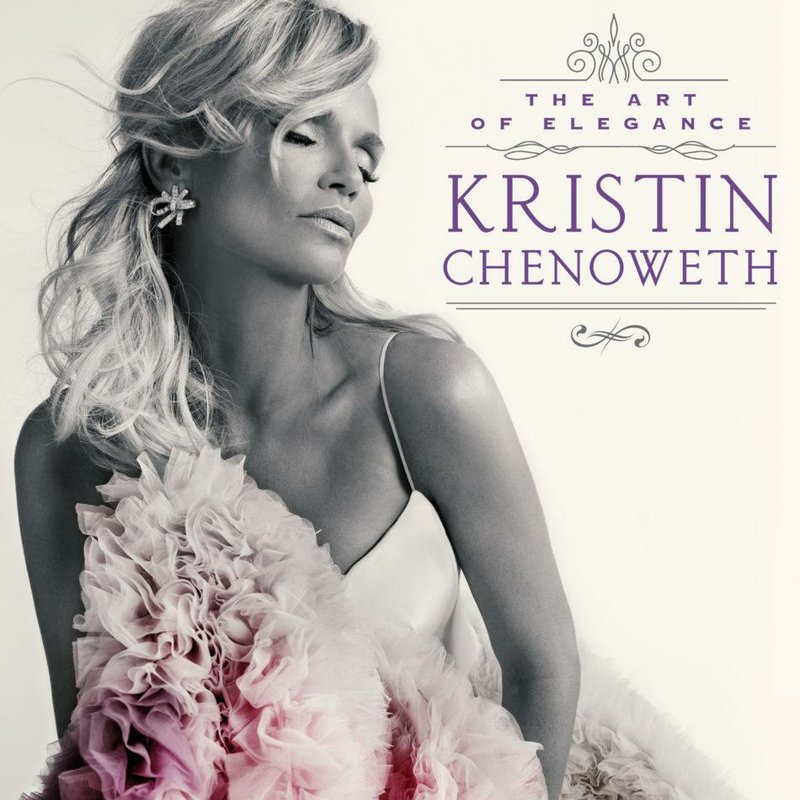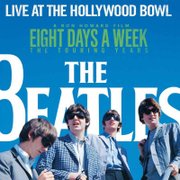A-Kristin Chenoweth
The Art of Elegance
American Songbook Classics
After tackling Broadway standards, gospel and country, the Tony- and Emmy-winning performer turns her crystal-clear pipes to the Great American Songbook for her latest album.
It's a genre for which she's very well-suited, as she shows on songs like the Gershwins' longing "Someone to Watch Over Me" and Rodgers and Hart's haunting "Bewitched, Bothered and Bewildered."
For the most part, the selections are rich and slow, though there is a jazzy swing to "Zing! Went the Strings of My Heart" and "They Can't Take That Away From Me." Slow doesn't mean dull, though. Chenoweth is an expert at song interpretation and she injects enough emotion and meaning into the songs to touch the listener without overdoing it or sounding phony.
Hot tracks: "Bewitched, Bothered and Bewildered," "Zing! Went the Strings of My Heart"
-- JENNIFER NIXON
CThe Beatles
Live at the Hollywood Bowl
Capitol
The Beatles managed to ride the tsunami of the concert crowds' adrenalized frenzy during their 1964 and 1965 concerts at the Hollywood Bowl. The band's raw energy and drive is appealing, although one also hears their frustration at not being heard. That's why, in 1966, the screams took their final toll:
The band stopped touring.
Live at the Hollywood Bowl, originally released in 1977, reached No. 2 on the Billboard album charts. This reissue is being promoted as a companion to Ron Howard's film Eight Days a Week: The Touring Years.
Producer George Martin's choice of presentation -- melding songs from the concerts into a faux whole -- disappointed then and still does. For whatever reason -- perhaps because the full shows have been available as unauthorized bootleg recordings for decades -- complete sets of any of the shows are not presented in this reissue.
There are improvements. Giles Martin (the late Beatles producer George Martin's son) has utilized different tape sources and taken advantage of technology to give greater clarity to the instruments and vocals. George Harrison's guitar playing, thrillingly direct and intricate, especially benefits from the sonic update. Vocals seem to have gained impact and power.
Along with the 13 tracks on the original release, there are four bonus tracks added at the end. That's no substitute for presenting at least one full set -- complete and in order ... the way the screaming crowds (may have) heard it. Instead, once again, it's Live and Incomplete at the Hollywood Bowl.
Hot tracks: "Ticket to Ride," "Baby's in Black," "She's a Woman"
-- ELLIS WIDNER
AAnna Netrebko
Verismo
Deutsche Grammophon
Verismo, or "realism," is the term used to describe Italian opera around the turn of the 20th century. The roles require a big voice and a big temperament: These ladies are divas in distress, whether it's Maddalena in Giordano's Andrea Chenier describing her mother's death at the hands of French revolutionaries, or the title character of Ponchielli's La Gioconda contemplating suicide.
The Russian soprano Anna Netrebko takes on nearly a dozen roles she has never sung on stage and brings them all to life with her creamy, flexible sound. Listen to the end of "Io son l'umile ancella" from Cilea's Adriana Lecouvreur. Netrebko draws out the last syllable seemingly forever, moving from full voice to a mere wisp of sound.
She takes on both soprano roles in Puccini's Turandot. First comes the fragile slave girl Liu's "Signore, ascolta!" capped by a lovely soft high B-flat. Then the steely title character's "In questa reggia," with its climactic high C. She is joined here by tenor Yusif Eyvazov, and the excitement they generate makes one long to hear the Three Questions scene that follows.
Eyvazov, Netrebko's husband, also partners her in the entire final act of Puccini's Manon Lescaut. Here she is in her glory, with a searing account of "Sola, perduta, abbandonato" as Manon faces death in the Louisiana desert.
Besides the pure vocal pleasure it brings, this album is a landmark in the remarkable growth of a singer who began more than two decades ago as a light lyric soprano, moved into bel canto, then Verdi and Puccini and recently ventured into Wagner.
Hot tracks: all
-- MIKE SILVERMAN,
The Associated Press
B+Nels Cline
Lovers
Blue Note
Nels Cline is alternative music's jagged edge. Be it his position of power (chords) in Wilco or his cranky contributions to a diverse list of artists (Dylan, Julius Hemphill, Lydia Lunch), the guitarist/composer skates among keening free jazz, irked post-punk, and cinematic ambience. Most unusual is Cline's frenetic but elegantly nuanced noise on his solo records, working alone or with his eponymous Trio or Singers. Nothing in his catalog, however, prepares you for the tender, Technicolor scope that is Lovers.
Arranged (by Michael Leonhart) like the shadowy, experimental big-band albums of George Russell and Gil Evans -- with a sweet touch of Henry Mancini -- Lovers allows Cline and his 20-plus players to re-create the romantic mood music of the '50s in the guitarist's spiky image. There are some covers -- such as Rodgers and Hart's sweetly flustered "Glad to Be Unhappy" -- but Lovers is hardly a covers album. Cline's compositional mix on tunes like "Hairpin & Hatbox" and "The Bond" is as conventionally romancing as it is downright creepy.
Hot tracks: "Hairpin & Hatbox," "The Bond," "Glad to Be Unhappy"
-- A.D. AMOROSI,
The Philadelphia Inquirer
Style on 09/20/2016


